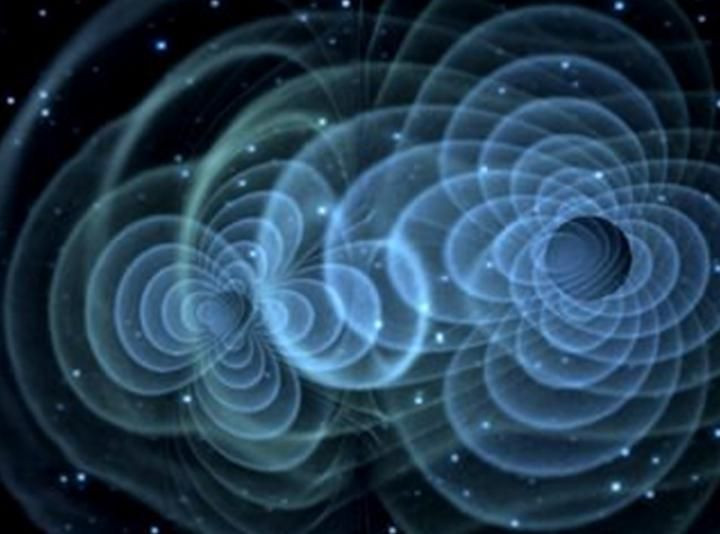Supermassive Black Holes Will Collide In About 100K Years

In a galaxy far, far away, two supermassive black holes trapped in an intricate -- and ultimately fatal -- dance are about to collide and merge in an event that is expected to warp the fabric of space-time itself. However, as is always the case with cosmic events of such mind-boggling magnitude, the smashup is still an impossibly long time away when measured in a human timescale -- approximately 100,000 years from now.
According to a study published Wednesday in the journal Nature, the black hole duo -- called PG 1302-102 -- is located 3.5 billion light-years away, in the Virgo constellation. The system is the tightest orbiting pair detected so far, with the black holes separated by a mere light-week.
“This is the closest we’ve come to observing two black holes on their way to a massive collision,” the study’s senior author, Zoltan Haiman, an astronomer at Columbia University, said in a statement released Wednesday.
Black holes have always raised a raft of questions that have boggled astrophysicists and cosmologists. These bodies -- formed when a massive star collapses upon itself -- have occasionally been described as the “vacuum cleaners” of the universe and are notorious for their tendency to wreak havoc on the usual laws of physics that govern the rest of the cosmos.
It is in this context that the latest discovery, detailed in the journal Nature, assumes significance. According to the astronomers from Columbia University, who made the discovery using data from NASA’s Galaxy Evolution Explorer (GALEX) and the Hubble Space Telescope, the discovery might not only help understand how galaxies merge, it can also provide the first observational evidence of the so-called gravitational waves.
“Watching this process reach its culmination can tell us whether black holes and galaxies grow at the same rate, and ultimately test a fundamental property of space-time -- its ability to carry vibrations called gravitational waves, produced in the last, most violent, stage of the merger,” Haiman explained, in the statement.

According to the general theory of relativity, gravity is a product of the curvature of space-time. And, it is hypothesized that gravitational waves are responsible for transporting energy in the form of gravitational radiation -- much like electromagnetic waves carry electromagnetic radiation. If these waves are detected, it would strengthen the case for physics beyond the Standard Model and refine our current understanding of the theory of relativity.
Additionally, the discovery also provides a new technique for detecting black holes mergers -- an event that, despite being quite common, is hard to spot and confirm.
The latest pair was discovered after scientists tracked the system’s changing light patterns. The researchers looked for evidence of a Doppler boost -- similar to one observed when a ambulance siren grows louder and more high-pitched as it approaches -- in ultraviolet wavelengths. Their model predicted that the variation in intensity, caused by the swinging motion of the black holes and their accretion disks, should be two or three times greater in ultraviolet light than visible light -- a prediction that was borne out by observations made using GALEX and Hubble.
“We can start to put numbers on the rates that black holes come together and build up into larger black holes, and use what we're learning to search for more black holes pairs,” co-author David Schiminovich from Columbia, said, in the statement.
© Copyright IBTimes 2024. All rights reserved.






















